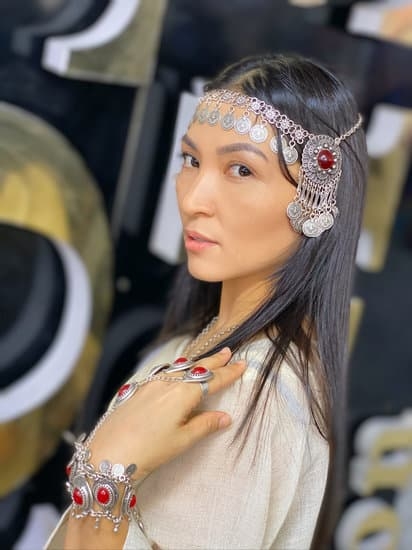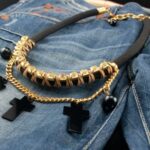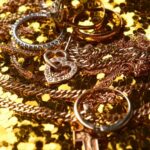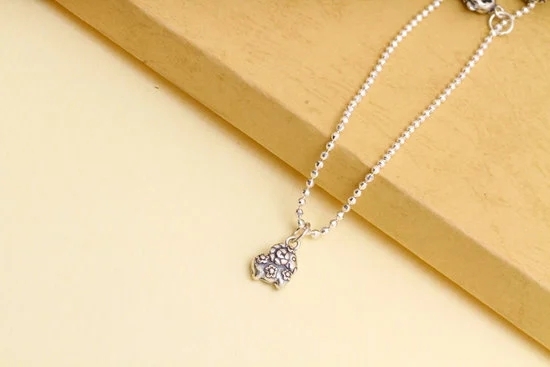When it comes to showcasing diamond jewelry, high-quality product photography is essential. In this article, we will explore the importance of capturing visually appealing images and how they can impact sales and customer engagement.
From the equipment needed to setting up the perfect shooting environment, as well as mastering lighting techniques, composition, focusing, capturing details and textures, and post-processing and editing – we will guide you through the steps to shoot diamond jewelry like a professional. Get ready to showcase the sparkle and brilliance of these exquisite pieces using captivating visuals.
In today’s competitive market, high-quality product photography has become increasingly important for businesses selling diamond jewelry. The right images can make a significant impact on sales by grabbing customers’ attention and enticing them to make a purchase. Visually appealing photographs not only highlight the intricate details of diamonds but also create an emotional connection with potential buyers. Additionally, beautiful images have the power to elevate a brand’s reputation and build trust among customers.
In order to achieve stunning results in your diamond jewelry photography, it is crucial to have the right equipment. Whether you choose to work with a DSLR camera or a high-resolution smartphone with advanced camera capabilities, having suitable gear is essential for capturing all the intricate details of these precious gemstones.
Additionally, macro lenses or lens attachments allow you to capture even the smallest facets of diamonds while tripods or stabilization tools ensure steady shots for sharp images. Reflectors or diffusers play a crucial role in controlling lighting conditions so that each piece shines in its full glory.
By harnessing the power of high-quality product photography, you can bring out the brilliance of diamond jewelry like never before. Stay tuned as we delve into all aspects of shooting diamond jewelry – from setting up your shooting environment to mastering lighting techniques and composition – we’ve got you covered on how to capture these dazzling gems in their best light. Are you ready? Let’s dive into the mesmerizing world of diamond jewelry photography.
EQUIPMENT NEEDED
To capture stunning images of diamond jewelry, having the right equipment is essential. Here are some key tools and accessories you will need to achieve professional-looking photographs:
- DSLR cameras or high-resolution smartphones suitable for jewelry photography: Investing in a good camera with high-quality lenses will allow you to capture intricate details and showcase the brilliance of the diamonds. Alternatively, if you have a smartphone with a high-resolution camera, it can also produce impressive results.
- Macro lenses or lens attachments: Macro lenses are specifically designed for close-up photography, allowing you to capture the smallest details of the diamonds and gemstones. If you don’t have a macro lens, lens attachments such as macro filters can be used to achieve similar effects.
- Tripods or stabilization tools: To ensure steady shots and avoid blurry images, using a tripod or any other stabilization tool is crucial. This will help eliminate camera shake and allow you to focus on fine-tuning your composition.
- Reflectors or diffusers: Controlling lighting is essential in jewelry photography. Reflectors can be used to bounce light onto specific areas of the jewelry, eliminating shadows and creating even lighting. Diffusers can help soften harsh lighting conditions by scattering the light more evenly.
| Equipment | Description |
|---|---|
| Camera | DSLR or high-resolution smartphone suitable for jewelry photography |
| Lens | Macro lens or lens attachments for capturing intricate details |
| Stabilization Tools | Tripods or any other stabilization tools for steady shots |
| Lighting Accessories | Reflectors or diffusers for controlling lighting |
SETTING UP THE PERFECT SHOOTING ENVIRONMENT
Setting up the perfect shooting environment is crucial when it comes to capturing high-quality images of diamond jewelry. This section will provide valuable tips and techniques to ensure that the shooting environment is conducive to producing visually appealing and professional-looking photographs.
One important aspect of setting up the perfect shooting environment is creating a DIY lightbox for controlled lighting conditions. A lightbox helps eliminate harsh shadows and creates a soft, even light that beautifully highlights the features of the jewelry. It can be easily created using materials such as foam boards, tissue paper, and LED lights. By diffusing the light source through the tissue paper, you can achieve a soft, diffused light that enhances the clarity and brilliance of diamonds.
In addition to a DIY lightbox, another option is utilizing natural light or specialized photography lighting setups. Natural light can create a soft and natural look, especially when shooting near a window with indirect sunlight. However, it’s important to avoid direct sunlight as it can create unwanted glares or reflections. Alternatively, using specialized photography lighting setups such as continuous lights or studio strobes allows for more control over the intensity and direction of light.
Eliminating distracting backgrounds and decluttering the area is also essential in creating an optimal shooting environment for diamond jewelry photography. A clutter-free background ensures that all attention is solely on the jewelry itself. Using plain backdrops in neutral tones such as black or white can greatly enhance the overall presentation of diamond jewelry.
| Tips for Setting Up | the Perfect Shooting Environment |
|---|---|
| Create a DIY lightbox | for controlled lighting conditions |
| Utilize natural light or | specialized photography lighting setups |
| Eliminate distracting backgrounds | and declutter the area |
MASTERING THE ART OF LIGHTING
When it comes to shooting diamond jewelry, mastering the art of lighting is crucial in capturing the sparkle, brilliance, and intricate details of these precious gemstones. The right lighting setup can enhance the overall presentation and create captivating images that engage potential customers and drive sales. In this section, we will explore some key techniques and tips for achieving stunning lighting effects in diamond jewelry photography.
- Understand the Three-Point Lighting Technique: The three-point lighting technique is a widely used method in photography to control light and create a balanced illumination. This technique involves positioning three main lights: the key light, fill light, and background light. The key light acts as the primary source, illuminating the subject from one side to create shadows and highlights.
The fill light helps soften shadows by providing additional illumination from a different direction. Lastly, the background light is placed behind the subject to create separation and add depth to the image. - Properly Use Reflectors: Reflectors are invaluable tools for controlling lighting in jewelry photography. By bouncing off light onto specific areas of the jewelry piece or eliminating harsh shadows, reflectors can help achieve desired effects and enhance gemstones’ sparkle. Experiment with different types of reflectors – such as white foam boards or silver reflective surfaces – to find what works best for your specific shoot.
- Experiment with Different Lighting Setups: Don’t be afraid to think outside the box and try unique lighting setups to achieve desired effects in your diamond jewelry photography. You can experiment with diffusing or directing natural sunlight through windows or using specialized photography lighting setups like ring lights or softboxes. Each setup will provide a different mood or effect on your jewelry piece, so take advantage of various options to create visually appealing images.
By mastering these lighting techniques in your diamond jewelry photography, you’ll be able to showcase their beauty accurately while capturing every detail that makes these pieces unique. Remember, lighting is a powerful tool that can significantly impact the overall quality and appeal of your images. So, have fun experimenting, and watch as your diamond jewelry photographs start to shine like never before.
COMPOSITION TECHNIQUES
When it comes to shooting diamond jewelry, mastering composition techniques is essential for creating visually appealing and captivating images. Here are some tips to help you enhance the composition of your diamond jewelry photography:
- Rule of Thirds: The rule of thirds is a basic principle in photography that can be applied to diamond jewelry photography as well. Imagine dividing your frame into a grid of nine equal parts with two horizontal lines and two vertical lines. Positioning key elements of the jewelry, such as gemstones or focal points, along these lines or at their intersection points can create a more balanced and visually pleasing composition.
- Symmetry and Balance: Diamond jewelry often features symmetrical designs, such as earrings or pendants. To highlight symmetry, make sure your composition reflects this by centering the main element or ensuring both sides have equal visual weight. Additionally, finding balance in your composition by distributing smaller elements evenly across the frame can create a more harmonious image.
- Negative Space: Negative space refers to the empty areas surrounding the main subject. Incorporating negative space in your diamond jewelry photography can draw attention to the piece itself and create a sense of elegance and simplicity. Experiment with different compositions that allow for sufficient negative space without overshadowing the beauty of the jewelry.
In addition to these techniques, don’t be afraid to play around with different angles, perspectives, and close-ups when shooting diamond jewelry. Changing up the angle can offer a fresh perspective on the piece and showcase its unique features and details.
Remember, practice makes perfect when it comes to composition techniques in photography. Don’t hesitate to experiment and try out different approaches until you find the style that best suits your vision for showcasing diamond jewelry.
FOCUSING AND DEPTH OF FIELD
Utilizing manual focus for maximum control over sharpness
In diamond jewelry photography, achieving sharp focus is crucial in order to effectively showcase the intricate details of the jewelry. While autofocus can be useful in some situations, manual focus provides greater control and precision.
By manually adjusting the focus ring on your lens, you can ensure that specific areas of the jewelry are sharply in focus while other parts may intentionally be left slightly blurred for artistic effect. Take the time to experiment with different focal points and see what works best for capturing the essence of the jewelry.
Adjusting aperture settings to achieve desired depth of field
Depth of field refers to how much of your image is in focus, both in front of and behind your subject. In diamond jewelry photography, you typically want to have a shallow depth of field to draw attention to specific details like gemstones or engravings while blurring out any distractions in the background. This can be achieved by using a wide aperture (a low f-number) when shooting.
Keep in mind that as you widen your aperture, less of your image will be in sharp focus. Play around with different aperture settings to find the balance that creates a visually appealing depth of field while still retaining enough sharpness.
Showcasing multiple focal points to highlight different facets of the jewelry
Diamond jewelry is known for its brilliance and intricate faceting, so it’s important to capture these characteristics in your photographs. One effective way to do this is by showcasing multiple focal points throughout your images. By focusing on different facets or areas of interest within the jewelry piece, you can highlight its unique beauty from various angles. This technique allows viewers to appreciate the craftsmanship and sparkle from every perspective.
Preventing focus stacking errors for professional-looking results
Focus stacking involves taking multiple images with different focal points and then merging them together during post-processing, resulting in a final image where the entire jewelry piece is sharply in focus. While this technique can be effective for certain types of jewelry photography, it can also lead to errors if not executed properly.
To ensure professional-looking results, it’s important to carefully align and merge your images using software specifically designed for focus stacking. Pay close attention to detail during the shooting process to minimize any alignment issues or inconsistencies that may arise when combining the photos.
By mastering the art of focusing and depth of field in diamond jewelry photography, you can create stunning images that capture the essence and beauty of each piece. The next section will discuss how to capture intricate details and textures effectively.
CAPTURING DETAILS AND TEXTURES
Capturing the intricate details and textures of diamond jewelry is crucial for showcasing its beauty and allure. In this section, we will explore techniques and tips for capturing these significant aspects of diamond jewelry photography.
Utilizing macro lenses for capturing intricate details
When photographing diamond jewelry, it’s essential to capture even the finest details. Macro lenses are perfect for this task as they allow you to get up close and personal with the piece. These lenses have a shorter minimum focusing distance, enabling you to capture sharp images of small details like gemstones, engravings, and intricate designs.
Highlighting the sparkle and brilliance of diamonds
Diamonds are known for their brilliant sparkle, so it’s vital to capture this characteristic in your photographs. To emphasize the sparkle, experiment with different lighting angles and intensities. Play with reflections or use a lightbox setup to enhance the diamond’s radiance. Reflectors can also be handy in redirecting light onto the diamonds to maximize their brilliance.
Accentuating surface textures and engravings to add depth
Apart from capturing the brilliance of diamonds, it’s equally important to showcase other surface textures and engraving details on jewelry pieces. This adds depth and visual interest to your photos. Experiment with different lighting setups that provide side lighting or utilize shadows creatively to highlight these features. Adjusting your camera angle can also help accentuate texture by casting shadows on certain areas while making others pop.
Using props or complementary elements to enhance the context
To create visually compelling jewelry photographs, consider incorporating props or complementary elements that add context or tell a story. For instance, placing a delicate ring beside a blooming flower could evoke feelings of romance and elegance. However, ensure that any prop you use does not overshadow or distract from the main focus – the diamond jewelry itself.
By using macro lenses, highlighting the sparkle of diamonds, emphasizing textures and engravings, and incorporating props or complementary elements, you can capture stunning images that showcase the intricate details and textures of diamond jewelry. These techniques will elevate your photography skills, allowing you to create captivating visuals that truly bring out the beauty and allure of these precious gemstones.
POST-PROCESSING AND EDITING
CONCLUSION:
In conclusion, mastering the art of shooting diamond jewelry requires not only the right equipment and a well-executed shooting environment but also careful post-processing and editing. The steps and techniques discussed in this blog post provide a comprehensive guide to capturing stunning images that showcase the beauty of diamond jewelry.
High-quality product photography is crucial for selling diamond jewelry and engaging customers. The impact of visually appealing images cannot be understated, as they have the power to captivate potential buyers and create a desire for these exquisite pieces. By following the outlined steps, photographers can elevate their skills and create images that truly do justice to the brilliance and sparkle of diamonds.
We encourage readers to apply these tips, experiment with different techniques, and share their stunning results. Through photography, we can inspire others to appreciate the beauty of diamond jewelry in new ways. So whether you are a professional photographer or an enthusiast looking to capture your own collection, put your skills to practice and let your creativity shine through captivating visuals.
Remember that each piece of diamond jewelry has its unique features and story. By applying attention to detail, using lighting effectively, optimizing compositions, capturing intricate textures, and enhancing the final images through post-processing techniques, photographers can create photographs that truly showcase the essence of diamond jewelry. So go ahead, grab your camera or smartphone, and let’s capture the radiance of diamonds together.
Frequently Asked Questions
How do you shoot diamond Jewellery?
Shooting diamond jewelry requires careful consideration of lighting, composition, and camera equipment. To showcase the brilliance and sparkle of diamonds, it is crucial to have ample light sources. Natural daylight or diffused light from a window can work well, but artificial lighting options like softboxes or LED lights can provide more control over the lighting setup.
It is essential to position the jewelry in a way that captures its unique angles and cuts, allowing light to reflect off its facets. Reflective surfaces like glass or acrylic can be used as props to create interesting reflections and enhance the overall aesthetic appeal.
What camera settings are best for diamonds?
When it comes to camera settings for shooting diamonds, there are a few aspects to consider. First, choosing a low ISO setting (around 100-200) will reduce noise and help capture fine details with greater clarity. Secondly, using a small aperture (a higher f-stop number like f/11 or f/16) will increase depth of field, ensuring that the entire piece of jewelry remains sharp in focus.
However, be cautious when using smaller apertures as they may require longer exposure times or additional lighting to compensate for decreased brightness. Lastly, manual focus can be beneficial when shooting jewelry since auto-focus may struggle with capturing intricate details accurately.
How do you shoot jewelry at home?
Shooting jewelry at home necessitates creating an appropriate setup to replicate professional studio conditions as closely as possible. Begin by selecting a clean space with good natural light or adequate artificial lighting options. A plain-colored backdrop such as white, black, or neutral gray allows the jewelry to stand out without any distractions.
Setting up a table near a window can help utilize natural light effectively; alternatively, you can use lamps and diffusers for controlled artificial lighting setups. Use reflective surfaces like mirrors or foil-lined boards strategically placed around the jewelry to bounce light back onto specific areas or create intriguing reflections. Additionally, employing tripods and remote shutter release can minimize camera shake for sharper images during close-up shots.

Welcome to my jewelry blog! My name is Sarah and I am the owner of this blog.
I love making jewelry and sharing my creations with others.
So whether you’re someone who loves wearing jewelry yourself or simply enjoys learning about it, be sure to check out my blog for insightful posts on everything related to this exciting topic!





